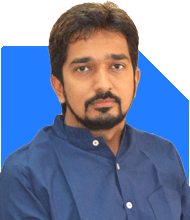Hi, I have around 30 lakhs to invest. I want to invest for long time.can you guide me which MFs to invest for highest return.
Ans: Investing Rs. 30 lakhs is a significant decision. It's essential to align your investments with your long-term goals. Before recommending specific mutual funds, let's break down a few critical aspects. This approach ensures you maximize returns while managing risks effectively.
Time Horizon and Risk Tolerance
A long-term investment horizon is beneficial. It allows you to benefit from the power of compounding. However, it's crucial to assess your risk tolerance. Are you comfortable with high-risk, high-reward investments? Or would you prefer a more balanced approach? Understanding this will help in choosing the right mutual funds.
The Role of Diversification
Diversification is key to managing risk. By spreading your investments across different types of funds, you can reduce the impact of market volatility. Equity mutual funds are often recommended for long-term investments. But, it’s essential to diversify across large-cap, mid-cap, and small-cap funds.
Importance of Actively Managed Funds
Many investors consider index funds or ETFs. However, these may not always be the best option for high returns. Actively managed funds, guided by experienced fund managers, can potentially outperform the market. These funds adapt to changing market conditions, unlike index funds that strictly follow a benchmark.
The Disadvantages of Index Funds
Index funds have lower expense ratios, but they lack flexibility. They mirror the market, meaning they can’t take advantage of opportunities that arise during market fluctuations. Over the long term, actively managed funds often deliver better returns, especially in the Indian market where active management can exploit market inefficiencies.
Regular vs. Direct Mutual Funds
You might also be considering direct mutual funds. While direct funds have lower expense ratios, they require continuous monitoring. A Certified Financial Planner (CFP) can guide you through regular mutual funds. These funds come with the added advantage of expert advice and periodic reviews, ensuring your portfolio stays aligned with your goals.
Benefits of Professional Guidance
Investing through a Certified Financial Planner (CFP) ensures that your investments are professionally managed. CFPs provide valuable insights, periodic reviews, and rebalancing strategies. This service is especially crucial in a dynamic market like India. A well-managed portfolio, guided by a CFP, can outperform self-managed investments.
Risk Management Strategies
While aiming for the highest returns, it's important not to ignore risk management. High-risk funds can offer high returns, but they also come with potential losses. A balanced approach, with a mix of equity, debt, and hybrid funds, can help manage this risk.
Asset Allocation for Long-Term Investment
For long-term goals, a higher allocation to equity funds is typically recommended. However, it’s wise to include some debt funds for stability. This balanced approach ensures your portfolio can weather market volatility while aiming for higher returns.
The Importance of Regular Reviews
Investing is not a one-time activity. Regular reviews and rebalancing are necessary to ensure your portfolio remains aligned with your goals. Market conditions change, and so should your investment strategy. A CFP can help with these regular reviews, ensuring that your investments stay on track.
Consider Tax Implications
Mutual funds are tax-efficient, but it’s important to consider the tax implications of your investments. Long-term capital gains tax (LTCG) applies to equity mutual funds. Understanding the tax impact on your returns can help in planning your investments better.
Avoiding Investment Cum Insurance Policies
If you hold any investment cum insurance policies like ULIPs, it might be wise to reconsider. These policies often come with high charges and lower returns compared to mutual funds. Surrendering these policies and reinvesting in mutual funds could be more beneficial for long-term growth.
Reinvestment Strategy
If you have any existing investments, it’s worth reviewing them. Sometimes, surrendering low-performing investments and reinvesting in well-performing mutual funds can enhance your portfolio’s overall returns.
Finally
Investing Rs. 30 lakhs with a long-term horizon is an excellent strategy. However, the key to maximizing returns lies in choosing the right mix of funds, understanding market dynamics, and staying disciplined. Working with a Certified Financial Planner (CFP) can provide the professional guidance needed to navigate these decisions.
Best Regards,
K. Ramalingam, MBA, CFP,
Chief Financial Planner,
www.holisticinvestment.in


















.jpg)











